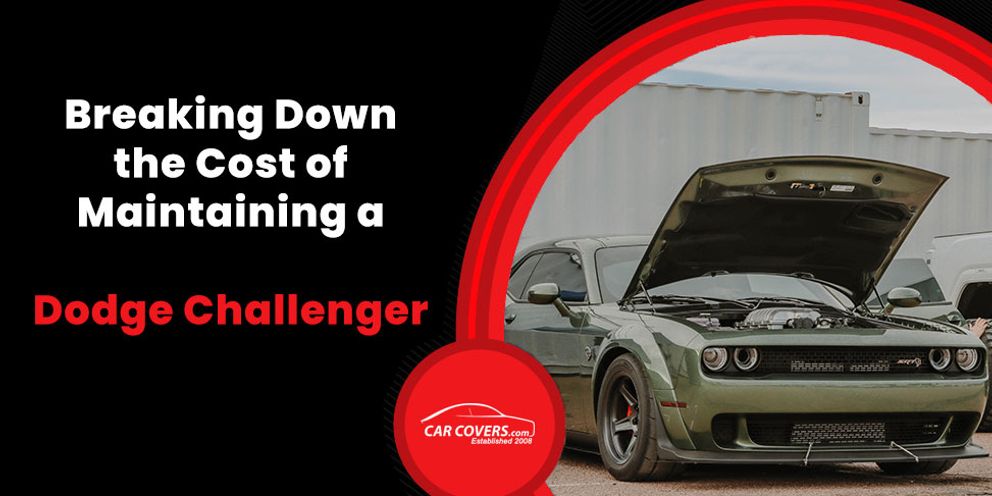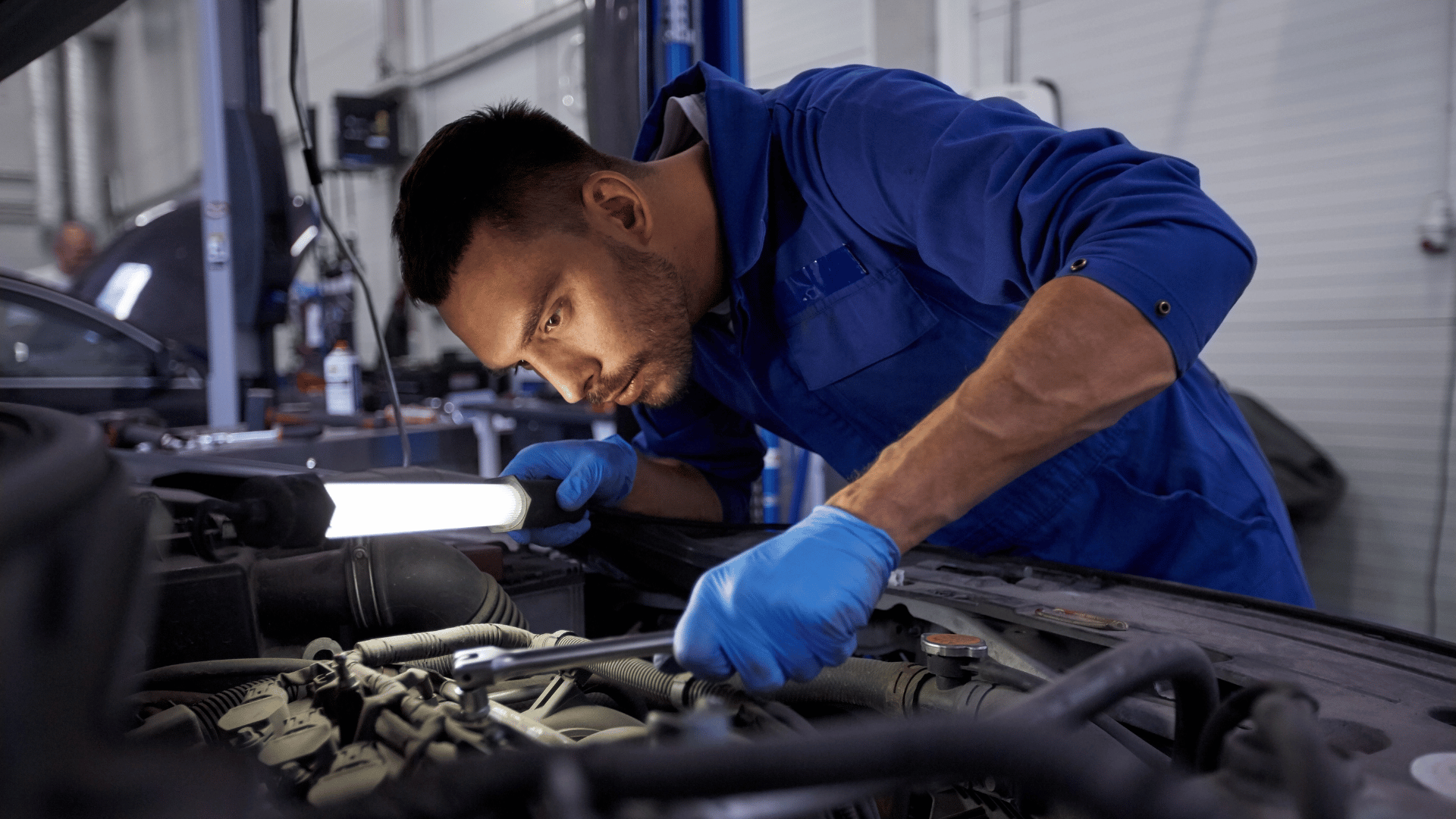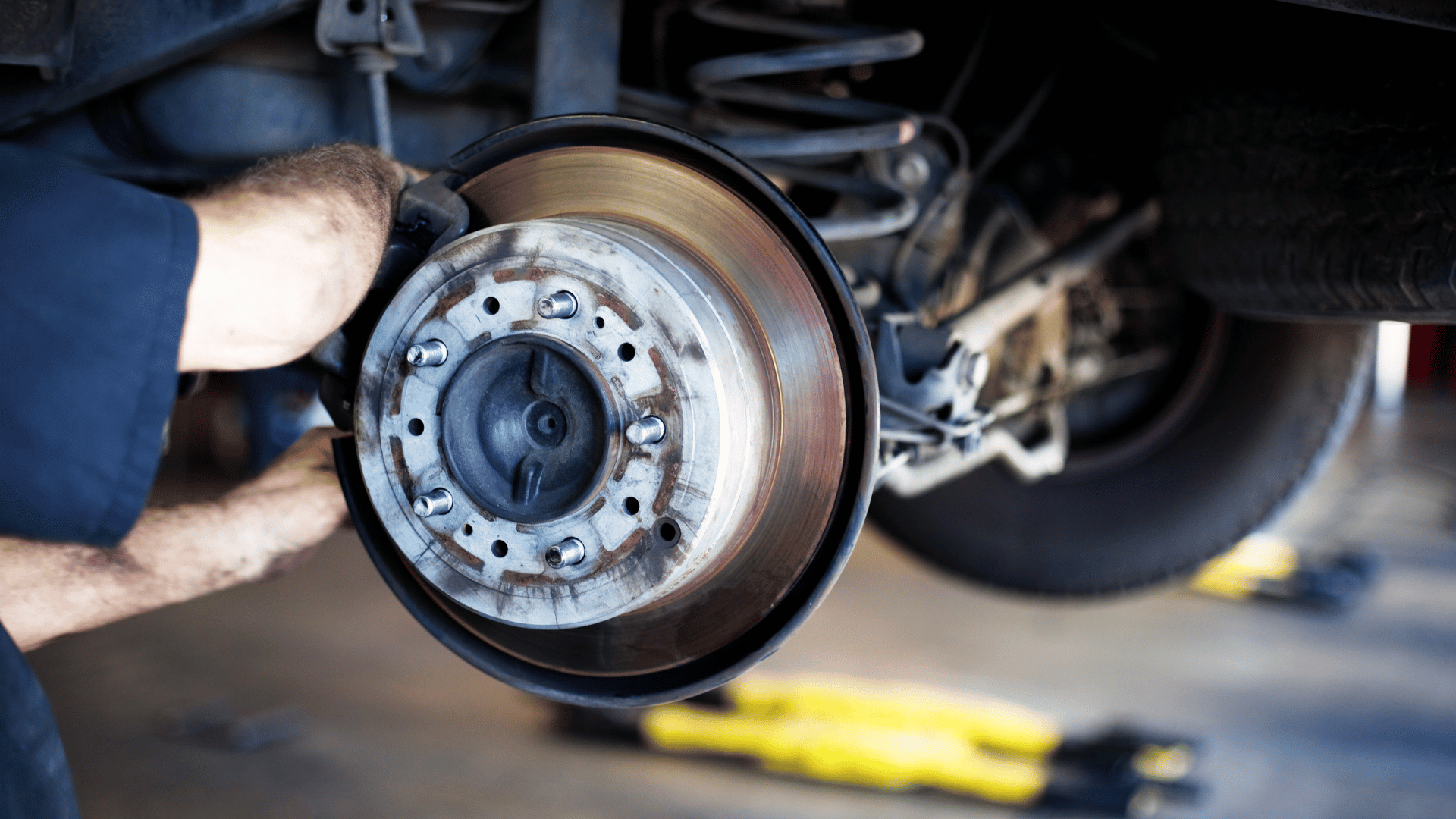
Dodge Challenger Maintenance Cost
Dodge Challenger Maintenance Cost
After dropping a hefty sum for your Dodge Challenger, you'll want to familiarize yourself with its maintenance costs.
The amount can easily add up from multiple repairs such as cabin air filter replacements and brake pad changes.
Each service varies in cost depending on your Challenger's model as well as the place of repair. Overall, the costs can accumulate to over $8,000 to $10,500 or more for 10 years.
Stick around to learn more about Dodge Challenger maintenance costs.
Dodge Challenger Service Costs Required

It's one thing to buy a Dodge Challenger and another to keep up with its maintenance. Service fees tend to run high and accumulate.
For this reason, the initial cost isn't the only thing you should factor in. Instead, a scheduled cost breakdown will give you a better picture of the payments to expect.
In addition, factors like location and model will also significantly impact the maintenance costs. Without further ado, here are common services your Challenger will need and their costs.
Oil Changes
An oil change for your Dodge Challenger can cost anywhere between $106 to $151. Oil changes usually need to be done every year. They're integral to your Challenger's internal engine parts.
Oil changes are also essential because combustion gasses and moisture wear out and contaminate the oil.
If you don't regularly drive the Challenger, that doesn't mean you're spared from an oil change. When engines don't run regularly, the oil has a higher likelihood of contamination.
New Battery
Getting a new battery for your Dodge Challenger can set you back around $255 to $288 including labor. Batteries kickstart your engine and control all the electrical components in the Dodge.
When it comes to how often you need a battery replacement, there's no one size fits. It all depends on how frequently you start your engine or allow it to sit idly.
Plus, the weather also affects a battery's lifespan. Hotter temperatures are more likely to cause battery failure than cold.
Tire Rotation Check
Tire rotations cost approximately $35 to $50 for your Dodge Challenger. Now, as you drive, all four tires are differently affected in terms of wear.
For this reason, a tire rotation is necessary to switch the tires and even out the wear and tear caused. That said, the change-ups can vary from switching the front wheels and back wheels or switching the left front wheel with the right back wheel and vice versa.
Check your owner's manual to know how often you should do a tire rotation. Other than that, it averages around every 5,000 to 7,500 miles.
Cabin Air Filter Replacement
Replacing the car's cabin air filter comes up to around $39 to $60 including labor costs. The cabin air filter keeps pollutants out of the car's interior. It primarily filters out dust and debris from the HVAC system.
We suggest changing the cabin air filter every 40,000 miles or so. A replacement is due when you notice a moldy odor coming out of the air conditioner vents. The smell originates from the trapped moisture in the region.
Brake Pad Replacement
Changing your Dodge brake pads can cost you approximately $168 to $367. When breaking down the cost, labor amounts to $79 to $100, and the rest goes to the parts. Aside from that, brake pads are responsible for slowing down the car using friction.
Imagine having to regularly stop your car's wheels while running at 55 mph. It can take a toll on the brake pads. You can tell the Challenger needs a replacement when the brakes act faulty, or you hear an odd squeal.
Your driving practice reflects how long your brake pads can last. For instance, braking abruptly too often or driving around high elevations tends to lower the pads' lifespan.
Change Spark Plugs
Changing a Dodge Challenger spark plug varies in cost between $122 to $403. The spark plug plays its role in the engine combustion cycle. As the engine's pistons move up, the plug ignites the fuel that boosts the engine.
Generally, spark plug replacements are done every 60,000 to 100,000 miles. Nevertheless, a replacement might be needed before then due to fluid leakage. A spark plug issue is often indicated by a flashing engine light.
In addition, signs of a needed spark plug replacement include reduced gas mileage as well as rough idling.
Automatic Transmission Fluid Change
A Dodge Challenger automatic transmission fluid change can cost anywhere between $184 to $214. Transmission fluid is responsible for cooling and lubricating the transmission system in your Challenger.
Broadly speaking, the transmission shifts power from the car's engine to its wheels. In an automatic transmission, the power is shifted based on gear changes. Besides that, loss of transmission fluid could come from leakage.
Plus, you need a transmission fluid change when it starts to look dark and murky. In most cases, the fluid is either pink or red.
The maintenance requirement is usually done every 30,000 to 60,000 miles. Nevertheless, we suggest revisiting the user manual.
Cooling System Flush
A cooling system flush costs around $206 to $439 including labor. The maintenance requirement targets your Dodge Challenger's cooling fluid. The fluid prevents overheating and circulates a water and cooling solution around the car's engine.
Changing or flushing the fluid is crucial since it can get contaminated with rust and scale particles. The contaminants can cause blockages in the cooling system's parts. The common signs that indicate you need this service are engine overheating and the Low Coolant warning light.
That being so, a cooling system flush is often done every three to five years. Alternatively, you can do it every 30,000 to 100,000 miles. Don't forget to consult your owner's manual for additional information.
Lubricate Driveshaft
Lubricating the Dodge Challenger's Driveshaft can cost around $95. The component is used to transfer torque as the car moves.
You can tell that your Challenger's drive shaft needs lubrication from grating noises or constant vibrations. As a general rule of thumb, you can lubricate the driveshaft after every oil change.
Change Wheel Bearings

Changing the Dodge's wheel bearings can cost anywhere between $190 to $475 including labor. Wheel bearings are used to connect a wheel to its respective axle.
A replacement is needed when you hear a grinding noise in the wheel assembly area. You may also feel a vibration in the steering wheel or car. A wheel bearing replacement is often due every 100,000 miles.
Strut Assembly Replacement
Strut assembly replacements tend to veer on the pricey side since they cost $328 to $979 on a Challenger. The maintenance requirement is expensive since it needs a lot of parts that accumulate in terms of price.
Plus, the cost breakdown also includes labor which is usually offered for around $95 to $200. Aside from that, the strut assembly is made up of shock absorbers. They're meant to soften the blow of a bumpy ride.
The assembly contains a spring coil attached to a piston. The latter component is contained in a cylinder housing gas or liquid. As you pass a speed bump, the piston goes up in the cylinder and contacts the spring, in turn, absorbing the shock.
Now, a strut assembly replacement is needed if your Challenger isn't smooth running. Plus, you may be hearing noise when going over speed bumps. You can replace the assembly every 50,000 to 100,000 miles.
Fuel Injector Change
Fuel injector replacements can amount anywhere between $299 to $519. The component is tasked with pushing fuel into the engine's combustion system. Each cylinder in an engine contains one injector.
You can locate the issue if your Challenger is excessively vibrating. Alternatively, your engine could misfire due to one of the injectors malfunctioning.
Fuel injector changes are best done at least every 80,000 miles. Overall, regularly cleaning the fuel injectors can lengthen the engine's lifespan.
Oil Pan Replacement
On average, an oil pan replacement can cost around $366 to $508 with labor included. The component acts as a reservoir for the car's motor oil. Additionally, it keeps the engine well-greased.
Although oil pans can last a lifetime, hard impacts can come by and affect the part's integrity. Subsequently, it can cause oil leaks that need immediate repair shop attention.
Shaft Assembly Replacement
An average shaft assembly replacement for your Challenger can run from $256 to $936. Luckily, these replacements can be done every 80,000 to 100,000 miles per axle.
You'll need the repair when you feel a vibration on the steering wheel or brake pedals. Plus, you may encounter wheel bearing issues causing grinding noises as you drive.
Dodge Challenger Maintenance Tips

Besides the critical maintenance requirements, you can go the extra mile to keep your Challenger looking good as new. Here are some worthwhile tips.
Get a Car Cover
Your sweet ride needs to be well-protected from any harsh elements like heat and snow. For this reason, you'll want to get a car cover to avoid fading paint or scratches.
Plus, if you own a convertible model, the cover will keep the vinyl seats from peeling and cracking. Pop it on when leaving it in your garage.
Regularly Monitor Tires
As a sports car, tire wear on a Dodge Challenger is inevitable. Having said that, you can try your best to minimize that wear by aligning the tires correctly. Misaligned tires could be caused by over-inflating.
Too much pressure can lead to central damage in the tire. Meanwhile, low pressure can increase drag and overwork your engine. Tire rotation and even pressure are two of the most critical maintenance needs to lengthen your wheels' lifespan.
Keep it Clean
Whether you have a red or yellow paint job done, you'll want to keep your Challenger looking clean and shiny. Regular washes and waxing of the paint layer can keep your exterior lasting longer and avoid chipping.
Plus, you'll want to keep any grime or bird poop off the car. Now, if you're driving over a salty region, washing the salt off is crucial to avoid corrosion in your engine area.
Drive Sensibly
Do you often see yourself attacking speed bumps? Well, too much shock can shorten your brake pad's lifespan as well as your pricey strut assembly.
Meanwhile, dry steering can cause additional wear on your tires causing misalignment. Consequently, you'll need more trips to the repair shop for tire alignment and rotations.
In addition, try your best to avoid idling for too long. It negatively affects your engine by causing exhaust damage. Alternatively, turning your engine on and off is better practice.
Dodge Challenger Maintenance Schedule
A maintenance schedule can help you keep your Dodge Challenger in its peak form. Here's what you'll want to do at each interval. Keep in mind that every month averages around 1,000 to 1,200 miles.
One Month
- Fluid levels check
- Tire pressure maintenance
- Monitor battery levels
- Inspect your taillights, headlights, and interior lights.
- Tighten battery cables
- Clean the car's exterior
- Fill the windshield wiper fluid
Three Months
- Cabin air filter check
- Exhaust and hose maintenance
- Filter fuel intake
- Check automatic transmission fluid levels
Six Months
- Tire rotation
- Driveshaft lubrication
- Monitor battery
One Year
- Wax paint job
- Change oil
- Check cooling system
- Inspect brake pads
- Check engine air filter
More than a Year
- Spark plug maintenance
- Check the wheel bearings' condition
- Strut assembly maintenance
Final Thoughts
Purchasing a Dodge Challenger doesn't only involve looking at the initial costs. It's about budgeting for the whole ride. That includes maintenance costs that encompass multiple services.
It can be as little as a fuel injector change to as large as a battery replacement. Either way, you can cut down on these costs if you're a sensible driver.
To be one, you'll need to fully adhere to your owner's manual. Plus, avoiding bad habits like abrupt brakes and dry steering can come a long way in boosting your Dodge Challenger's lifespan.
Updated